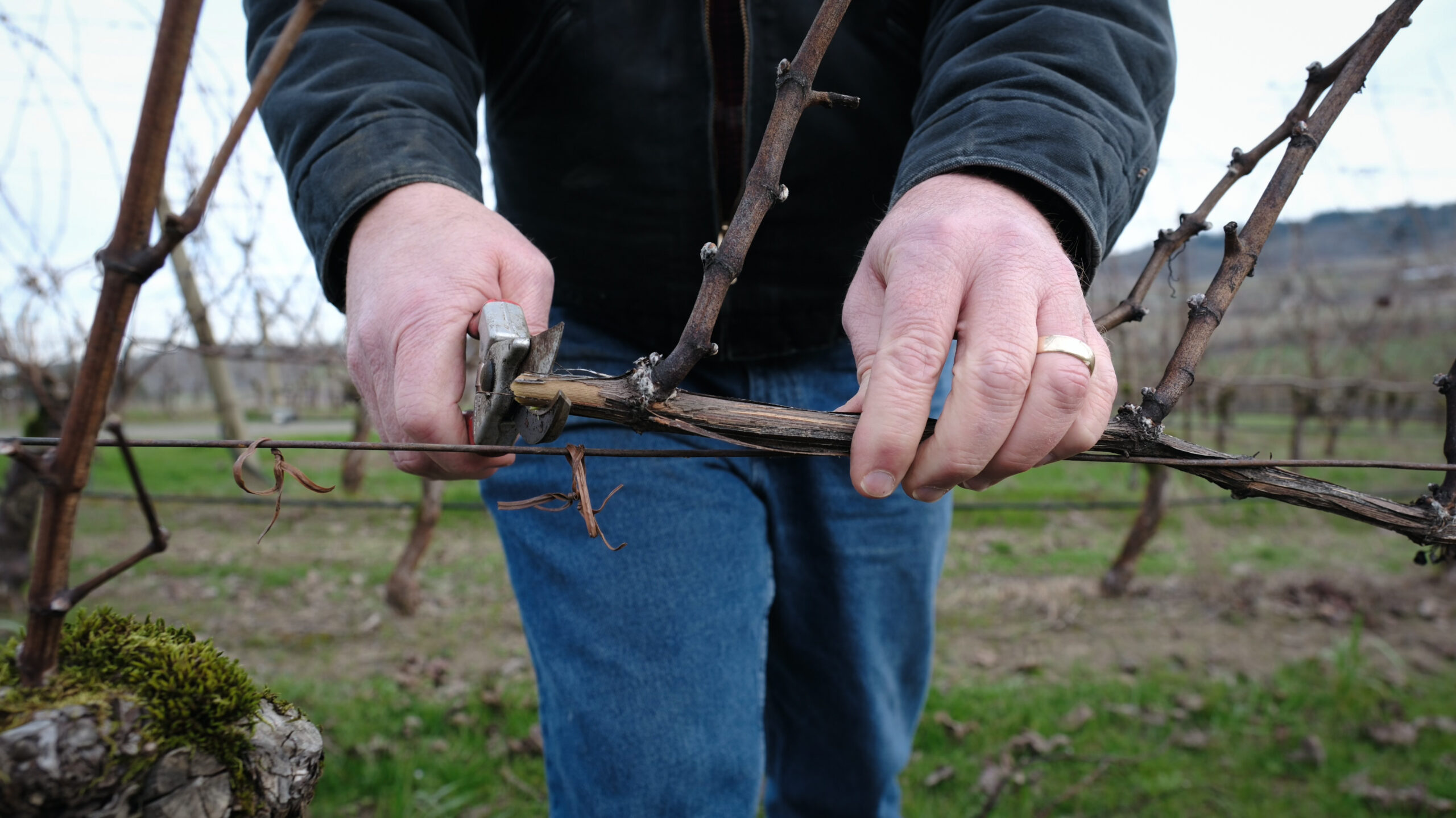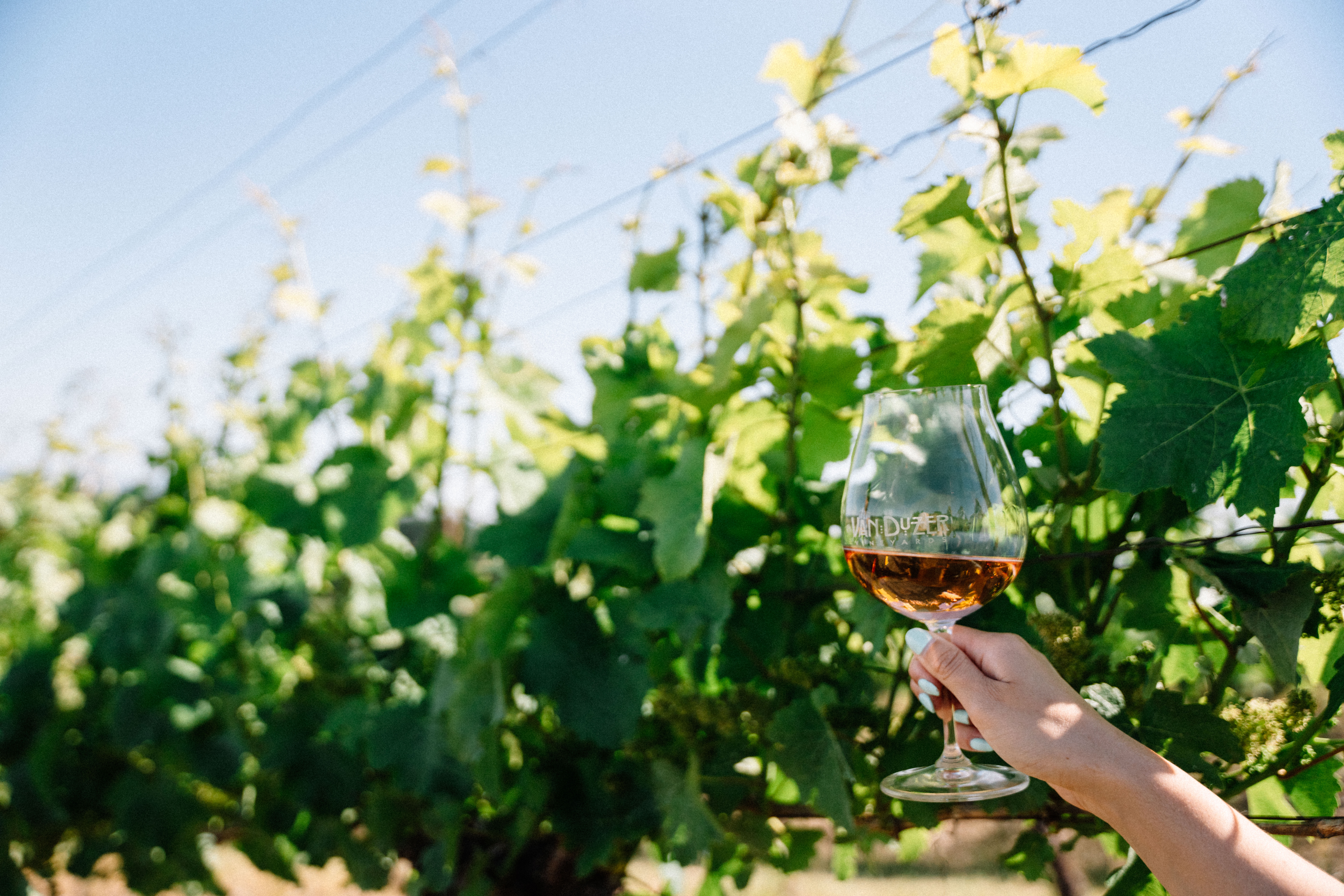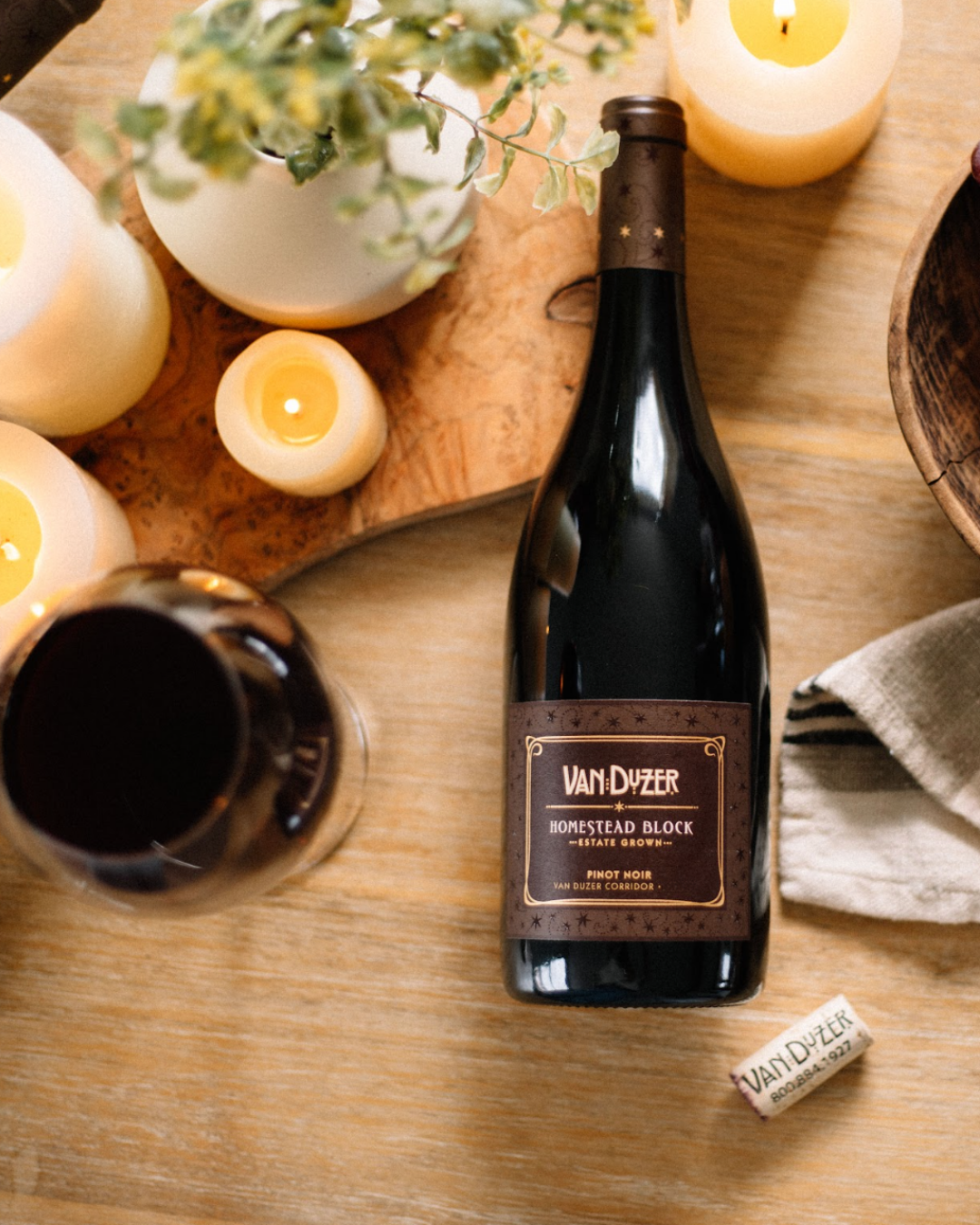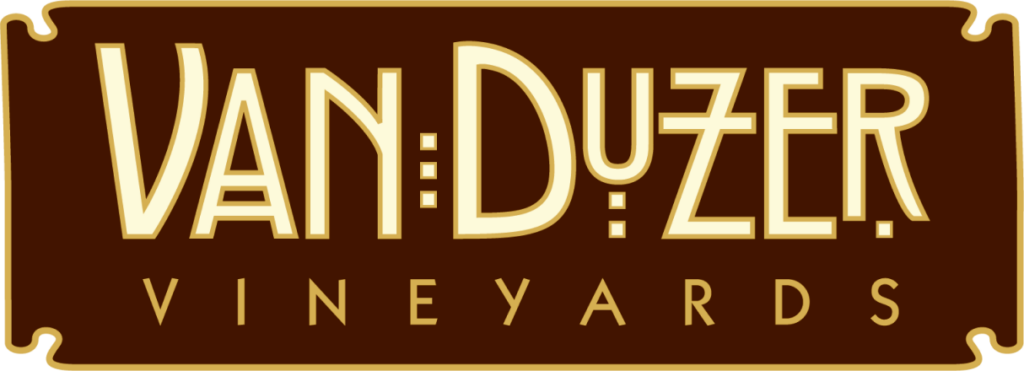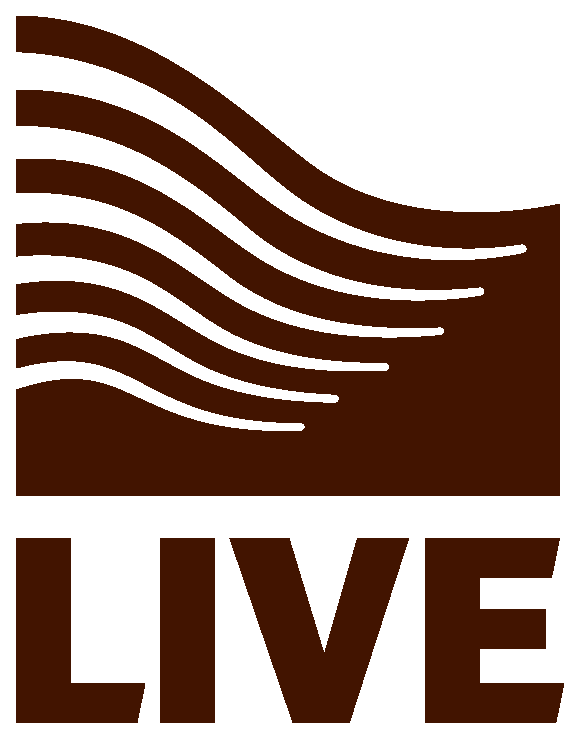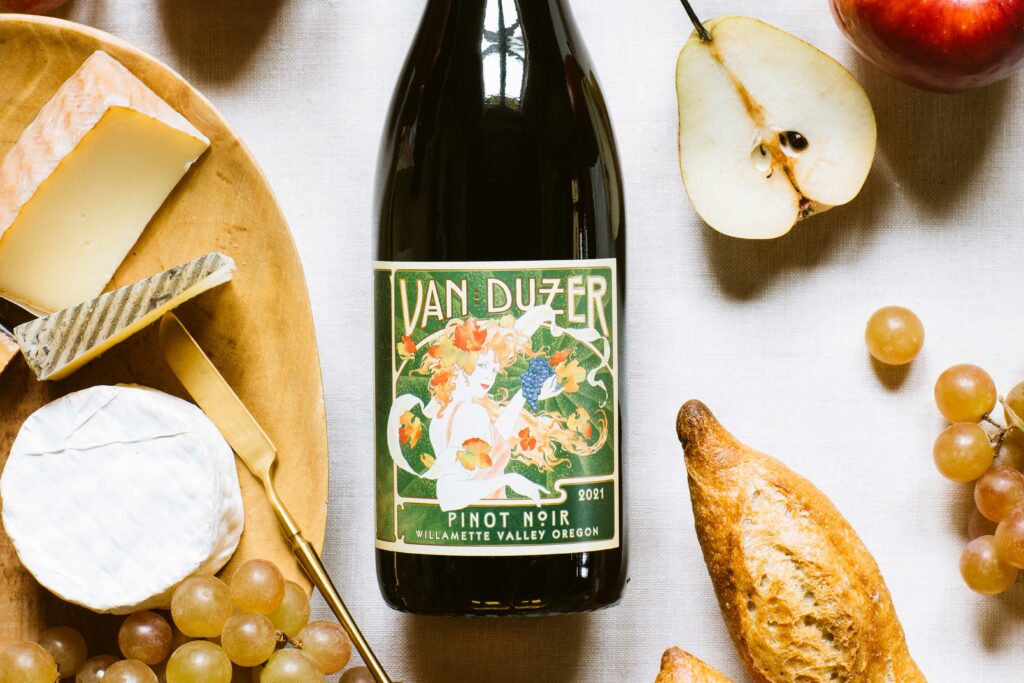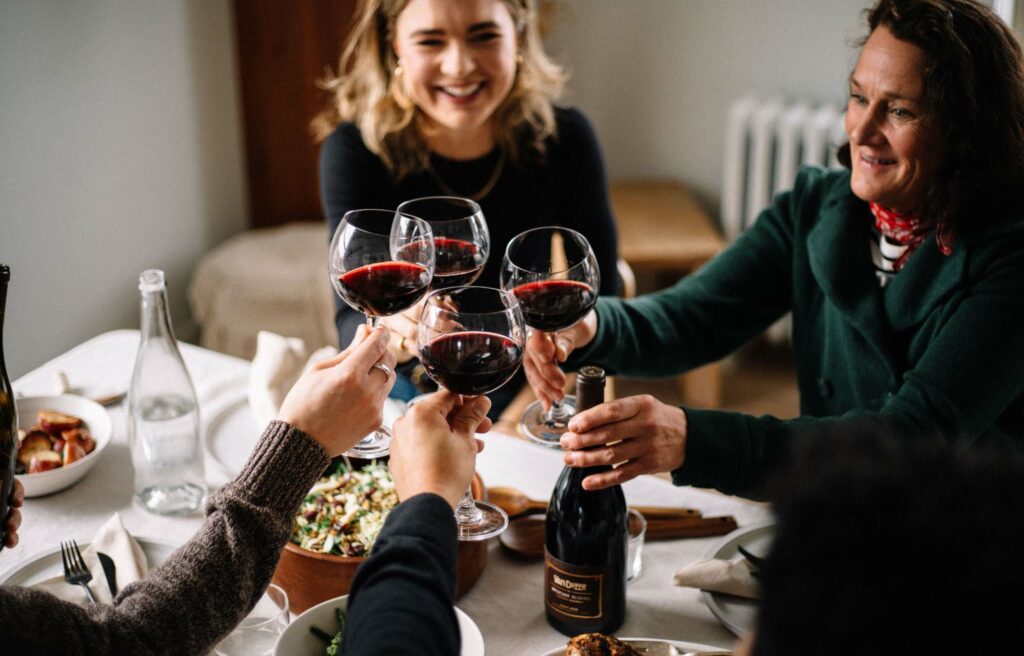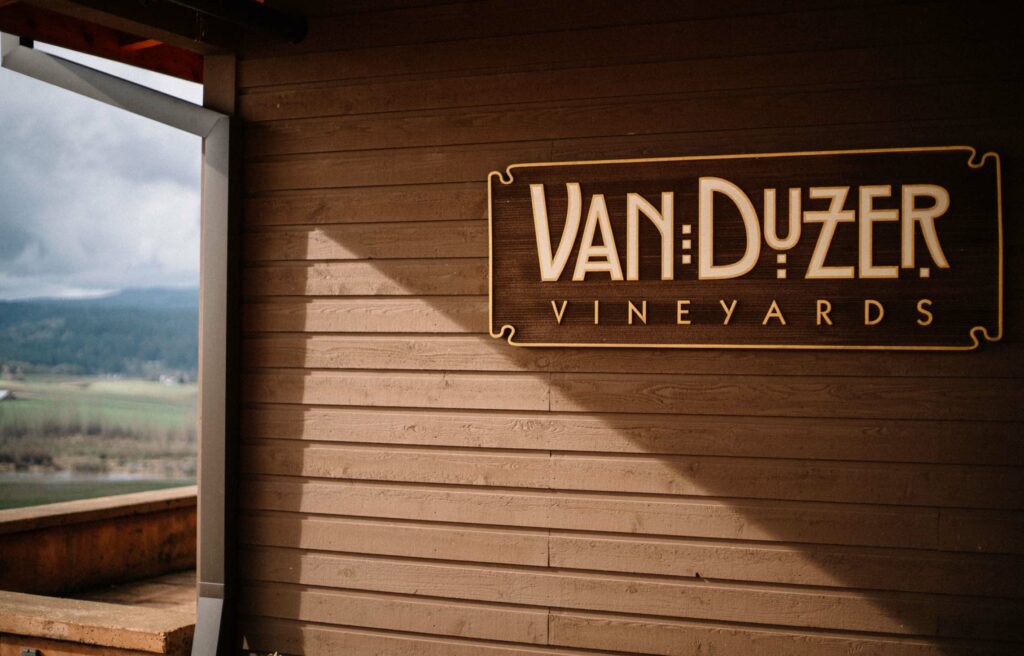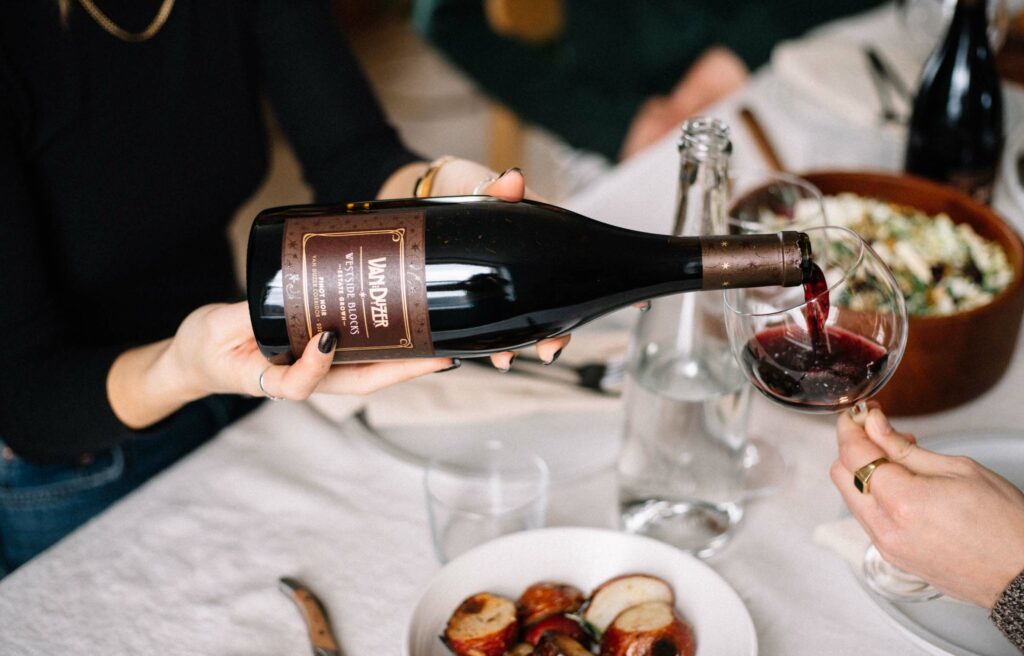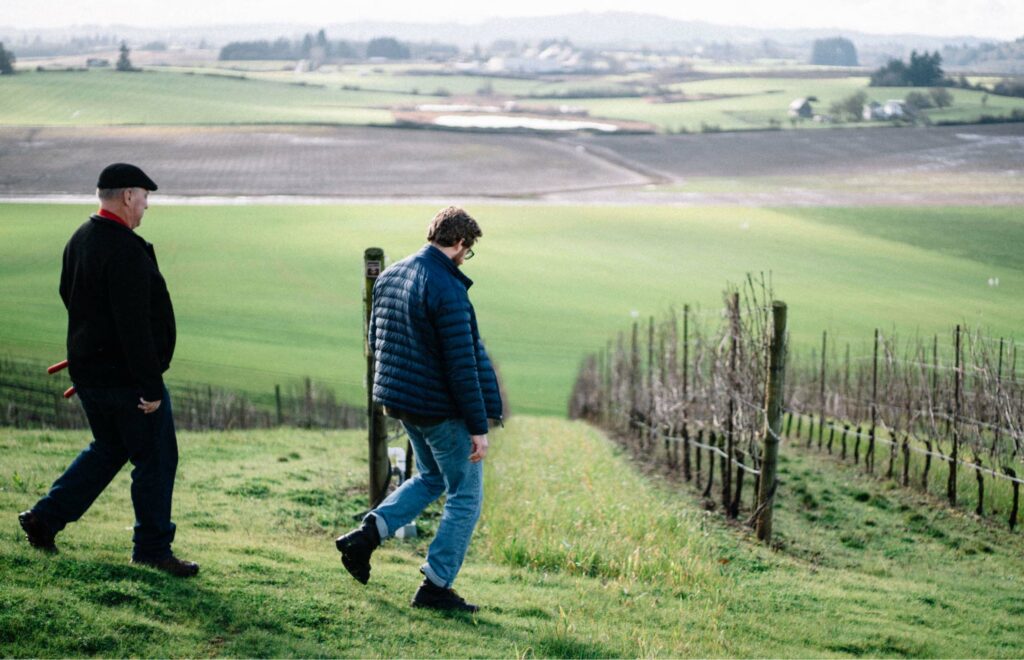At Van Duzer Vineyards, we know that the growing year doesn’t start with harvest – it begins in the quiet of winter, during pruning season. Here in the Willamette Valley, from late December through February, our crew makes decisions about vineyard pruning technique that will shape not just the coming months, but the quality of every bottle we’ll produce in the coming vintage. What might seem like an off-season activity is actually the foundation of our entire winemaking year.
Understanding Winter’s Role
Vineyard pruning technique is both straightforward and complex: we remove up to ninety percent of last year’s growth, leaving only one cane that will determine next season’s fruit. This dramatic reduction might seem severe to outsiders, but it’s essential for quality wine production. The timing is equally crucial. We begin in December and continue through February, ensuring we have enough time to address the unique needs of every vine in our care.
As our Viticulture Manager, Bruce Sonnen, explains, “When farming a vineyard, our goal is to trick the vine into growing shoots and fruit for us to harvest.” Left to nature, a grapevine would grow tall and produce just enough clusters for birds to spread its seeds. Our job is to guide it toward producing the quality of fruit we need for exceptional wine.
The Technical Side of Vineyard Pruning Technique
Each vine presents us with evidence of the previous year’s growth – the cane that was laid down the year before. We evaluate and prune the vine again, making crucial decisions about which cane will bear fruit and which will be discarded. The process requires removing 80-85% of last year’s growth, with careful selection based on positioning. Each internode on the cane holds a bud, and each bud represents the fruiting potential for the upcoming season.
“From the winemaking side, pruning influences the fruit load on the vine,” adds our Winemaker Eric Misiewicz. “If a vine bears too much fruit, we won’t make wines of the quality we want. If a vine is cropped too low, we don’t produce enough grapes. Pruning reinvigorates the plant and allows for the selection of ideal clusters in the years to come and subsequently better wines.”
The Consequences of Poor Pruning
Without proper vineyard pruning techniques, a vine will grow multiple shoots and clusters, creating an overly dense canopy that can harbor disease. This overproduction leads to fruit that doesn’t meet our standards for winemaking. As Bruce notes, “While the vine’s goal is to reproduce, our goal is to make delicious wine.” This balance between natural growth and wine quality in our LIVE Certified vineyard drives every decision we make during pruning season.
The Power of Experience
We’re fortunate to have a dedicated team who understand our vines intimately and has a deep knowledge of vineyard pruning technique. Some have worked these rows for nearly 26 years, while many others have been with us for 7 to 13 years. They pass through the vineyard 16 to 17 times throughout the growing season, getting to know each vine’s particular needs. By pruning season, they know which vines struggled in previous years and can adjust their approach accordingly.
This deep knowledge of our vineyard can’t be replaced. Each pass through the rows builds understanding, allowing our team to select the right canes and train each vine for optimal fruit production in the coming season. It’s a level of expertise that only comes with time and dedication.
Three Distinct Places, Three Approaches
Van Duzer’s position gives us three unique microclimates: the West Side Bowl behind the winery, the East Side, and the South Side Ridge near our tasting room. Each area responds differently to the Van Duzer Corridor winds, creating distinct growth patterns that influence our pruning schedule.
“The winds in the Van Duzer Corridor keep temperatures lower earlier in the spring, which slows down the bud break,” Bruce explains. This means we prune our South Side Ridge vines in mid- to late-February, while the West Side Bowl sees pruning as early as December. The East Side follows its own timeline, typically finishing by early January.
Understanding Each Vine
Our pruning reflects the individual needs of each vine. A strong, established vine tells its story through vigorous growth – reaching the next plant with shoots extending to the trellis top. For these healthy vines, we’ll lay down another four-foot cane for the next growing season, along with a backup cane in case of damage during brush pulling or tying.
Weaker vines require a different vineyard pruning technique. For vines with shorter shoots, we might count total shoots between two vines to understand their true capacity. If we count eight shoots total, we know this vine can support eight buds. We then select the healthiest cane and focus the vine’s energy on its strongest potential growth.
Coordinating Growth
We time our pruning to each microclimate to ensure all vines emerge from dormancy together. Even Chardonnay, which naturally wakes three weeks before Pinot Noir, gets pruned last to align with our overall growing cycle. This careful timing helps us manage our different varietals and microclimates as one cohesive vineyard.
At Van Duzer Vineyards, these winter months and expert pruning technique lay the groundwork for everything that follows. Each precise cut, each careful decision, shapes not just the vine, but the wines to come. What looks like dormancy to visitors is actually one of our busiest times – the true beginning of vintage, where next year’s wines start their journey from vine to bottle.

